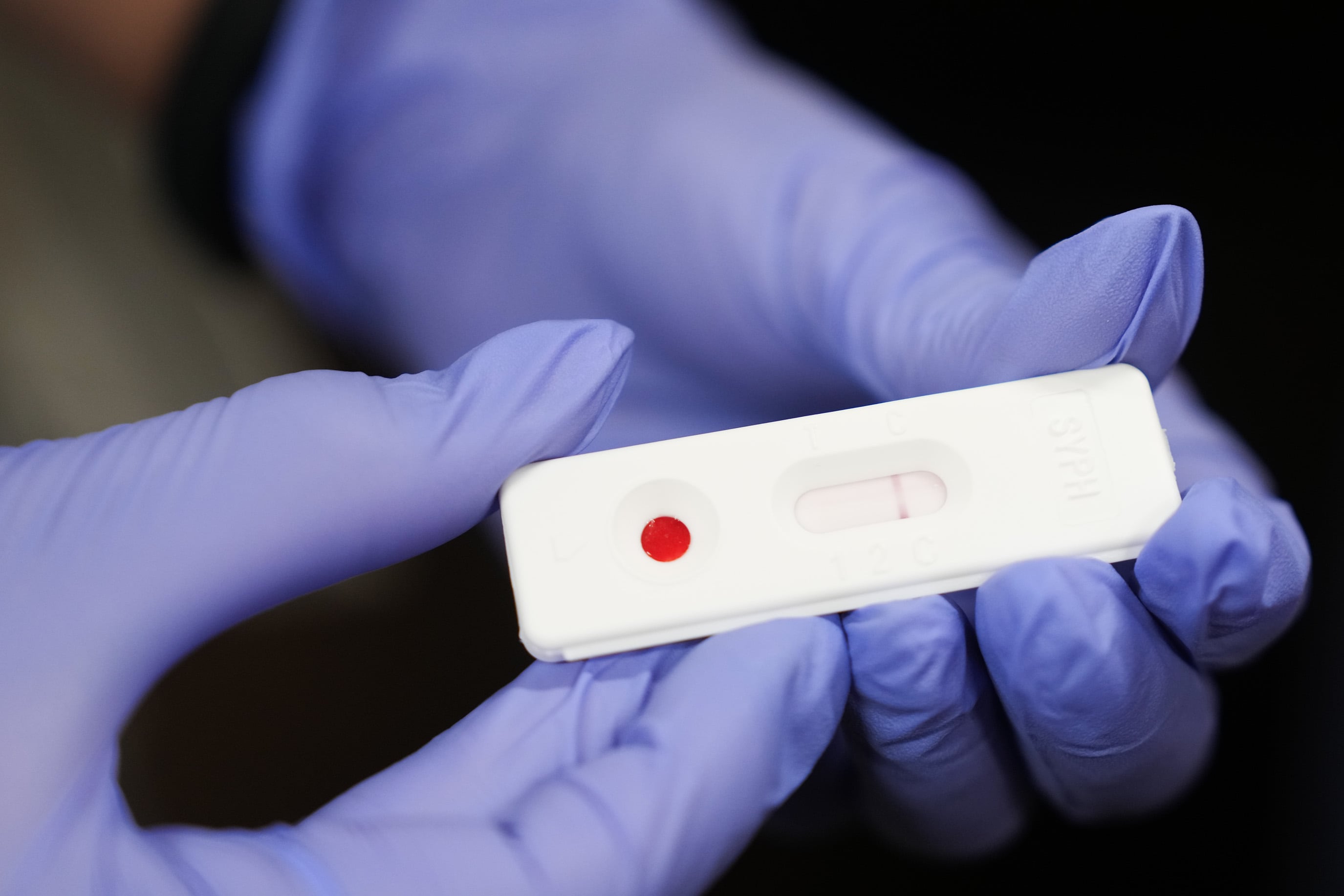Dr. Jay K. Varma is a special contributor to Healthbeat. Public health, explained: Sign up to receive Healthbeat’s free national newsletter here.
Amid the disturbing news about public health in the United States, there may be some good news about sexually transmitted infections. On Sept. 24, the Centers for Disease Control and Prevention quietly reported that the combined total of the three nationally reportable STIs — chlamydia, gonorrhea, and syphilis — declined in 2024.
Is the United States finally making progress in improving sexual health? While reported cases have indeed declined, the data have some important limitations, and the data on syphilis show worrisome trends in how we detect, track, and treat infectious diseases.
CDC STI surveillance report shows decline in cases
The CDC tracks and reports annually on chlamydia, gonorrhea, and syphilis because they are the most common bacterial sexually transmitted infections and the ones most strongly associated with long-term illness and reproductive harm, including pelvic inflammatory disease, infertility, and chronic pelvic pain in women and epididymitis and infertility in men.
Syphilis can lead to neurologic and cardiovascular complications years after initial infection and can infect a developing fetus, resulting in stillbirth, neonatal death, or lifelong disability. These infections also serve as sentinel markers of inadequate access to testing and treatment for vulnerable populations.
According to the CDC’s Sexually Transmitted Infections Surveillance, 2024 (Provisional) report, the overall total number of reported STIs — chlamydia, gonorrhea, and syphilis combined — declined 9% percent from 2023 to 2024, marking the third consecutive annual decrease and the first sustained multi-year decrease in a decade.
Major findings include:
- Chlamydia, the most common reportable infection, declined 8% in 2024.
- Gonorrhea dropped 10%, the third consecutive year of decline.
- Primary and secondary syphilis, the infectious stages of the disease, fell 22% after years of steady increase.
- Congenital syphilis rose 1.6% from 2023, reaching nearly 4,000 reported cases in 2024 and marking the 12th year in a row that cases have risen.
- Despite the declines, the absolute total of reported STIs (2.25 million cases) remains 13% higher than 2014.
What is driving the decline in reported STI cases?
There are several plausible explanations for the decline in reported cases.
First is the impact of HIV pre-exposure prophylaxis (PrEP) programs. Patients taking PrEP are required by their providers to get tested and treated for STIs every three months. As PrEP use has expanded among men who have sex with men, transgender women, and other people in sexual networks with high STI transmission, so too has testing and treatment for STIs.
Second is the impact of doxycycline post-exposure prophylaxis (DoxyPEP). DoxyPEP involves taking a single 200 mg dose of doxycycline within 72 hours after sex to prevent bacterial STIs. Studies have shown it can reduce syphilis and chlamydia infections by about 70% and gonorrhea by 50% in men who have sex with men and transgender women. It is possible that widespread adoption in high transmission sexual networks is helping reduce transmission.
A third possibility is that antibiotic use for other reasons — for example, increased prescriptions for respiratory infections during Covid-19 surges or the past year’s wave of influenza and RSV — may have had a collateral effect on bacterial STIs. While this would not be a desirable reason given the risks of antibiotic resistance, it could partially explain short-term declines.
Finally, declines in gonorrhea could reflect indirect protection from vaccines. The meningococcal B vaccine, which targets Neisseria meningitidis, has shown cross-protection against Neisseria gonorrhoeae. Broader use of this vaccine in college-age and high-risk adults might be contributing to fewer gonorrhea infections.
Is it possible the decline in STI rates is not real?
While there are plausible reasons for declines in STI cases, we need to be cautious about drawing any conclusions about the impact of testing, treatment, and vaccines.
First, the national data is not complete. The CDC released only national-level information for 2024 because of ongoing updates to its surveillance systems. More worrisome is that the CDC’s transition to its new One CDC Data Platform began in 2022, which coincides with the first of these three consecutive years of decline. The agency acknowledges that the new system has delayed or limited reporting from many states.
Second, the data that were released lack important data elements. Detailed data by state, race, ethnicity, age, and sexual behavior were withheld. These analyses often reveal disparities and local surges that national averages can obscure. Without them, we cannot know whether declines are widespread or concentrated in a few regions or populations. Because the federal government has recently revised CDC data systems — changing “gender” to “sex,” discontinuing data collection about transgender people, and reducing analyses by race and ethnicity — the next round of surveillance may provide less visibility into who is being affected and where disparities are widening.
Finally, we lack information about STI testing rates. Surveillance only counts the number of positive test results. A decline in positive test results could simply reflect fewer being tested for STIs. Many local health departments have cut sexual health clinic hours and staff. Private clinicians may be ordering fewer screening tests because of competing demands or changing insurance coverage. Without knowing how many people were tested, we cannot determine whether incidence truly declined or whether we are just missing more infections.
Do the trends in syphilis cases tell the real story?
Looking at the data on syphilis in more detail helps provide insight into what might and what might not be working with STI control. Nearly all of the reduction in reported syphilis cases occurred among men. Primary and secondary syphilis among men dropped by 9,600 cases, a 24% decline from 2023 to 2024. Among women, the decrease was much smaller — about 1,900 cases, or 14% — indicating that heterosexual transmission remains far less controlled. This pattern most likely reflects the effects of biomedical prevention among MSM — DoxyPEP and more frequent screening among people taking PrEP.
In fact, the data show that early non-primary, non-secondary syphilis — an indicator of recent infections that were not diagnosed — increased among women by nearly 8% in 2024. This is a warning sign that transmission in heterosexual networks continues to increase, even as symptomatic disease declines among men. Because these early infections often go unnoticed, they can progress to infectious stages or lead to congenital syphilis during pregnancy.
The rise in congenital syphilis, which is infection passed to a fetus during pregnancy, is the most worrisome indicator. Despite an overall 9% decline in total reported syphilis cases, congenital syphilis rose 1.6% to nearly 4,000 reported cases, the 12th consecutive annual increase. Compared to 2014, congenital syphilis is now nearly 700% higher. That divergence between adult and congenital disease means fewer pregnant women are being screened or treated in time to prevent infection of their babies. Each congenital case requires multiple breakdowns in our health system: undiagnosed syphilis in men, untraced female partners, missed screening during pregnancy, and failure to treat during pregnancy.
What the 2024 CDC STI surveillance data can and cannot tell us
While CDC surveillance reports are essential for understanding national trends, they are inherently retrospective. Case reports take time to collect, verify, and analyze. By the time data reach the public, they describe events that occurred months or even years earlier. Surveillance is like our rear-view mirror of public health. It’s not what is happening in front of us right now or what’s further down the road.
The declines in chlamydia, gonorrhea, and early-stage syphilis may represent progress in some populations, particularly men who have access to biomedical prevention. But the same data reveal widening gaps for women and infants and an ongoing breakdown in our systems to prevent high-consequence infections, such as syphilis.
Dr. Jay K. Varma is a physician and epidemiologist. An expert in the prevention and control of infectious diseases, he has led epidemic responses, developed global and national policies, and implemented large-scale programs that saved hundreds of thousands of lives in Asia, Africa, and the United States.







